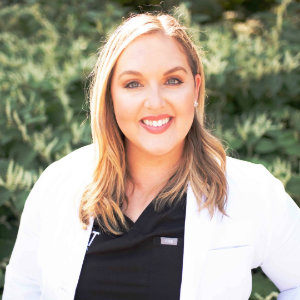

How Fortifying the Patient-Provider Relationship Leads to Lasting Contact Lens Satisfaction
time to read 5 minutes


time to read 5 minutes

Dr. Susan Resnick, OD

Dr. Kristin Anderson, OD

Dr. Jessilin Quint, OD
Kristin K. Anderson (KKA): What do you find patients look for most in their contact lenses, and how do you ensure they are getting the most out of their lenses?
Susan Resnick (SR): When fitting patients, I ask them about their contact lens experience. I dig deep, create open dialogue, and encourage them to share about their lifestyle, habits and identify potential compliance issues. This provides the opportunity to hear what’s working and what isn’t. I find that patients prioritize comfort, and they need a space to openly discuss issues with their current lenses. Despite our best efforts, research shows that 57% of patients do not feel confident discussing comfort issues with their eye care providers.1 To some patients, sharing discomfort may be personal, or they may believe that all contact lenses have some level of discomfort. To address this, I ask targeted questions about their lifestyles, including, “At what point during the day do you notice your lenses are not as comfortable.” This helps me pinpoint when the patient starts to experience discomfort in their day and allows me to evaluate alternative contact lens options that might be more suitable.
Jessilin Quint (JQ): Similarly, I ask first-time contact lens wearers, or patients considering contact lenses for the first time, about their screen time, need for breaks, weekly schedule, and daily routine to determine the best lens replacement plan for their lifestyle. For existing wearers, I inquire about any discomfort they experienced and when it occurred. Contact lens discomfort can range from blurry vision, eyestrain, and eye fatigue.2 Identifying a patient’s lens replacement schedule plays a pivotal role in ensuring their contact lenses provide long-lasting comfort. Patients who value comfort may benefit from lenses with a more frequent replacement schedule, like daily disposable lenses, that prevent buildup from daily wear, offering a more comfortable experience with less irritation.3 Patients with concerns about symptoms of dryness or allergies may also find daily contact lenses are an option as they are designed to be worn for shorter periods of time4.
KKA: When talking to new and existing patients about contact lenses, how do you approach educating them on contact lens wear, care and safety responsibilities, and why is this step so important?
SR: Starting something new can be daunting for anyone, and this is especially true for patients adding a step to their self-care regimen. In my practice, we believe the education around contact lens wear, and why lens replacement schedules and lens care matter, are crucial because if patients understand the rationale and health reasons, they’re more likely to follow them. I begin by discussing the importance of eye health and the best practices for contact lens use to inform them about their vision health and prevent potential confusion. As doctors, we know that contact lens compliance and eye health are closely linked, but patients don’t always understand the implications. In fact, issues ranging from minor inflammation to severe infections can arise for patients who don’t follow their prescribed replacement schedules. 5 To support healthy lens wear, I follow this baseline education with a consult during the contact lens selection process – including why I’m recommending a certain lens for a certain patient.6 During initial visits, I’ll discuss lifestyle needs to recommend a lens replacement schedule that fits seamlessly with my patients’ routines.
JQ: I concur. It's essential to keep patients well-informed about their contact lens replacement schedule to prevent complications. Research shows that daily disposable contact lenses offer the highest replacement compliance rates, followed by monthly lenses.7 However, these replacement schedules may not be a fit for a patient’s lifestyle, so it is essential that there are more options for patients.
KKA: Great point, Jessilin. In fact, a recent survey found that 8 in 10 contact lens wearers agreed that a one-week contact lens replacement schedule provides a fresh, new contact lens every week.10* And it’s well established that two-week lenses have the lowest replacement compliance. 7
Adherence to a replacement schedule is important for healthy contact lens wear. It's important, for the success of our practices, to work with patients to ensure that they are satisfied with the contact lenses that we agreed were best suited for them. It also helps continue their ongoing care with us because I’ve gained their trust. In fact, one study found that patients who are not compliant with their lens replacement schedule are less likely to purchase an annual supply of contact lenses and have longer intervals between full eye examinations.7 As an eye care professional, I aim to make seeing clearly and maintaining eye health as effortless as possible.
KKA: Despite eye care professionals recommending daily disposable lenses, why are patients hesitant to make the switch from their current lenses?
SR: Like comfort, patients value affordability, but they are often hesitant to raise these concerns with their providers. In my practice, cost can be a primary fitting barrier. As a provider, I know lenses can be expensive, and cost plays a factor in a patient’s decision to select or switch lenses. Historically, many healthcare providers have felt uncomfortable discussing costs across the healthcare ecosystem, either due to a perceived lack of time or doubts about whether it is their place as doctors to bring up treatment costs. Likewise, patients often will not initiate cost conversations because they are concerned that they will seem as though they do not prioritize their health.8 In these situations, I encourage my team to proactively communicate costs during treatment selection as it allows our patients an opening to discuss their needs and to become more engaged in their relationships with us.8, 9
JQ: I agree, Sue. Patients deserve transparency about all aspects of their health, including costs. I believe cost is a driving factor in the decision-making process as it can sometimes prohibit patients from selecting the best option. As we discussed earlier, many ECP's believe daily disposable lenses are better overall, but the cost is the #1 barrier, 10** leading patients to revert to reusable lenses for their affordability. However, in my practice they are interested in alternative lens options, particularly patients who find daily disposable lenses too costly, as they still desire the benefits that they offer. It would be great to have more contact lens options available that are not only affordable for our patients, but also have a short replacement schedule, closest to a daily disposable, that still provides outstanding comfort. However, having an open conversation with patients about comfort may encourage them to make the investment or enable us as their provider to switch them to an alternative option. It’s also important to have these conversations with companies like Alcon to illustrate unmet patient needs so that together we can find new solutions.
KKA: Finally, how does strengthening the patient-provider relationship contribute to your patients’ long-lasting satisfaction with their chosen lenses?
SR: Fostering trust with my patients helps create a comfortable space for discussing concerns openly, without judgment. I ensure that their concerns are taken into consideration, as they are the true experts of their own health experience – they know what feels comfortable for them. With open dialogue like this, I’ve seen more of my patients return over time with outstanding outcomes.
JQ: Patient satisfaction is the desired outcome after every visit. While reassuring my patients’ concerns helps create a foundation for our relationship, allowing them to elaborate on the type of any discomfort and challenges of their contact lens selection, enables me to personalize their care, build trust and collaboratively determine the best contact lens option and a sustainable replacement schedule for their lifestyle.
Dr. Kristin Anderson serves as the Director of Professional Education, U.S. Vision Care at Alcon. In this role, she leads the development of resources, communication strategies and tactics for eye care providers. She is responsible for developing content to support the Alcon Experience Academy multi-media efforts and Alcon’s partnerships with optometric organizations and trade partners. She represents Professional Education and Development as a member of various internal and external working groups. She has been a member of several teams receiving ‘One Team’ Awards as well as being part of the iLux team nominated for a global marketing award.
With more than 35 years in optometry, Dr. Resnick has been recognized for her professional leadership and clinical excellence by Vision Monday, the American Optometric Association (AOA), the Gas Permeable Lens Institute, and Newsweek. Her clinical focus is specialty contact lens fitting at Dr. Farkas, Kassalow, Resnick & Associates in New York City. Dr. Resnick received her Doctor of Optometry from the New York State College of Optometry in 1983. She also authors, lectures and consults in areas of specialty contact lenses and emerging vision and eye care technologies.
Dr. Quint, a Fellow of the American Academy of Optometry, and a Board-Certified Diplomate of the American Board of Optometry, specializes in comprehensive family care with an emphasis on specialty contact lenses and dry eye disease. She practices at Smart Eye Care in Maine and is the founder of the Smart Dry Eye Center of Excellence. Dr. Quint received her Bachelor of Arts degree in Biology from Baylor University. She completed her Business Administration and Master of Science in Biology degrees at West Texas A&M University. She received her Doctor of Optometry from Indiana University. After graduating, she completed a post-doctoral Residency in Ocular Disease with an emphasis on ocular emergency and trauma at the Illinois Eye Institute in Chicago, Illinois.
* Based on survey of 500 US bi-weekly contact lens wearers.
** Based on agreement with the statement "I believe daily disposable lenses are better for my patients overall."
GLB-PR7-2400001